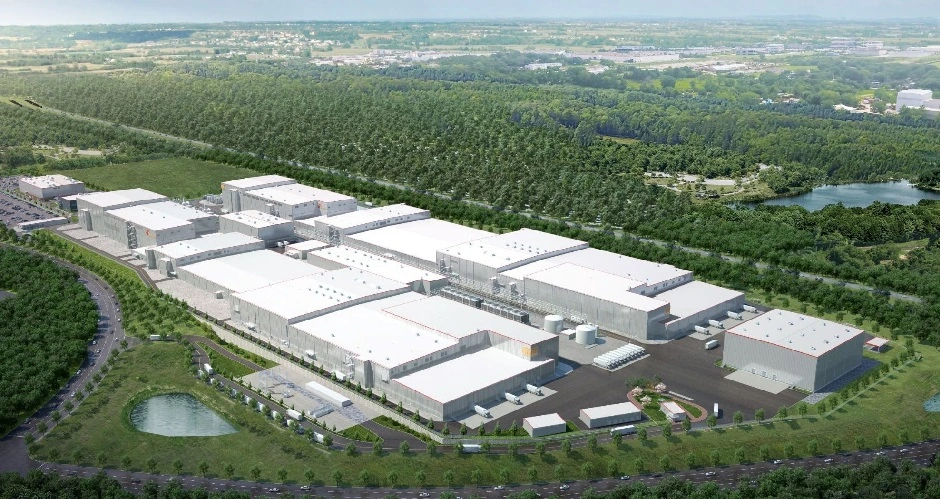Due to the increasing demand for electric vehicles (EVs), it is expected that nearly 250 battery factories will be installed in the European continent in the next ten years, as reported by Buck Consultants International.
Given the rise in zero-emission vehicle sales, the establishment of Li-ion battery production companies becomes an attractive investment for entrepreneurs.
Where will the new facilities be located? Below, Mobility Portal Europe provides a list of some countries that have already presented inauguration plans.
France
In the city of Douai, the Chinese company Envision will invest up to 2 billion euros in a gigafactory of Automotive Energy Supply Corporation (AESC) near the “Renault ElectriCity” electric vehicle production center.
The plant will have a capacity of 9 GWh in 2024 and a target of 24 GWh by 2030.
Additionally, it’s worth mentioning that two projects will be carried out in Dunkirk.
On one hand, the Taiwanese company ProLogium is working with the French government to secure subsidies for a 5.2 billion euros battery factory.
Production is expected to commence in 2026, with a projected capacity of 48 GWh.
On the other hand, the French startup Verkor plans to build a factory with a capacity of 12 GWh, with Renault being its main customer.
Germany
In the case of the Bavarian region, there are also high expectations for the coming years.
Firstly, the Swedish company Northvolt will invest between 3 and 5 billion euros if a subsidy currently under review is approved.
Specifically, the construction would commence in Heide, with the subsidy amounting to around 600 million euros.
On the other hand, in the town of Kaiserslautern, the company Automotive Cells Company (ACC) plans to open a gigafactory.
This is part of a project involving the establishment of several plants across the continent by the brand backed by Saft-TotalEnergies, Stellantis (PSA-Opel), and Mercedes.
For the coming year, although not much is known about it, the German national company CellForce expects to inaugurate a production facility in the municipality of Tuningen.
Another ambitious local project is Volkswagen‘s, which plans to open six factories across the continent by 2030.
The first one is set to start operating in 2025 in the city of Salzgitter with a capacity of 40 GWh.
Finally, from Asia, the Chinese company Svolt is on the horizon, investing up to 2 billion euros in the opening of two facilities, one in Überherrn and the other in Lauchhammer.
Both would be operational by the end of 2025, totaling 40 GWh.
Italy
The Italian nation has some plans already underway for the future.
Firstly, the local company Italvolt already has everything arranged to open its 3.5 billion euro plant next year.
It will be located between Scarmagno and Romano Canavese, with a production capacity of 45 GWh.
Another local contender in the sector is FAAM.
With an investment of 570 million euros, it expects its plant to be operational by 2024 with a capacity of 8 GWh. This facility is in preparation in Teverola.
On the other hand, as part of the aforementioned plans by ACC, there is also a 40 GWh factory scheduled to open in 2026. It will be erected in Termoli.
Norway
Due to its significant market, it’s natural that its national company Freyr has invested 1.7 billion euros to open a state-of-the-art factory in Mo i Rana.
The facility is set to be operational by 2028, with a capacity of 83 GWh.
On the other hand, the company Morrow plans for the first of the four expansion stages of its 470 million euros plant to be operational by 2024.
The projected production capacity is 32 GWh, and the location is Arendal.
Also, looking ahead to the coming year, Beyonder has chosen the town of Haugaland to inaugurate its production plant, with an envisaged capacity of 10 GWh.
Another Scandinavian-origin company with significant projects is Elinor.
The company invested an approximate amount of 1 billion euros in a plant that is expected to be operational by 2026, with a target capacity of approximately 40 GWh by 2030.
Spain
BASQUEVOLT plans to invest over 700 million euros in a plant. The goal is to produce 10 GWh by 2027.
Simultaneously, the Spanish government signed an agreement in July 2022 with China’s Envision to build a 2.5 billion euros plant with a planned capacity of 30 GWh.
The opening date has not been announced yet, but it is stated that the location will be in Navalmoral de la Mata.
At the same time, Volkswagen and its partners announced in 2022 that they would invest 10 billion euros in a 40 GWh plant. Production is scheduled to commence in 2026.
Finally, in October 2022, InoBat signed an agreement with the Spanish government to establish a 32 GWh factory valued at 3 billion euros.
United Kingdom
Within the United Kingdom, a significant commercial hub is also emerging concerning EVs.
As such, lithium battery production is thriving and shows a high projection for the near future.
Coventry has approved a site for a potential plant, but an investor has not yet been found.
The proposal includes a production capacity of 60 GWh, which will commence in 2025.
On the other hand, the Tata Group from India will build a gigafactory in Somerset worth 4 billion pounds to supply its Jaguar Land Rover factories.
The initial production capacity will be 40 GWh, creating up to 4,000 jobs. It is expected to commence operations in 2026.
Simultaneously, Envision is once again in the spotlight, constructing a gigafactory in Sunderland.
The plant will start operations in 2025 with a capacity of 12 GWh.
In the same vein, the UK government is considering seven sites for the installation of a factory through the investment of NanoTech Energy.
The company has allocated 1 billion pounds for this purpose.
Why should they be installed?
This year, EV sales grew exponentially on a global scale.
Even in 2022, approximately 10.5 million zero-emission cars were registered, compared to the 6.5 million sold in 2021.
Given the advancement of electromobility, it is expected that the global battery market will grow by 800% in just five years.
In Europe, the region experienced a 62% increase between July 2022 and 2023.
Furthermore, diesel car sales decreased by 9%, according to data from the European Automobile Manufacturers’ Association.
Another reason for high expectations regarding battery factories is the clear dominance of China.
During the third quarter of 2023, this country achieved a battery production almost ten times greater than the top-performing country in Europe, Germany.
Read more: 2023: Foreign automakers dominate EV market share in the EU






2 Responses
Please keep me updated. My company has supplied turn-key process for battery tray manufacturing to many companies.
10 million EV’s in 2023 on a total of 250 million cars isn’t much. But after 10 years they need new battery-packs. Many Asian companies are investing in Europe and will take over this battery market in Europe. Probably they have also priority to needed materials. The only way to stop Asian take over is to produce better and longlivety batteries. I personally believe that in 2030 no batteries which contain Lithium will be produced in Europe.
At this moment we are losing market by short-sightedness of the EU Commission